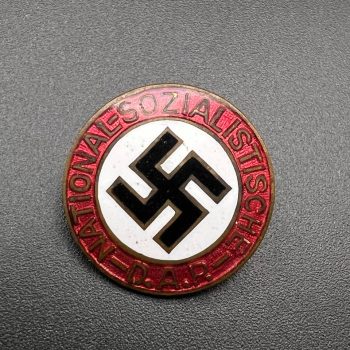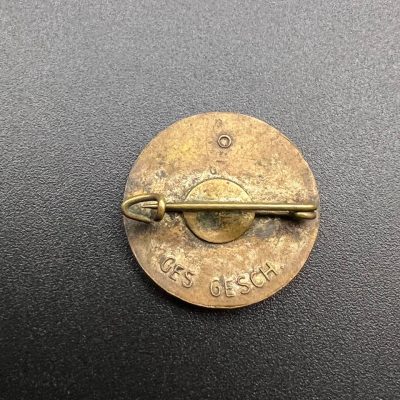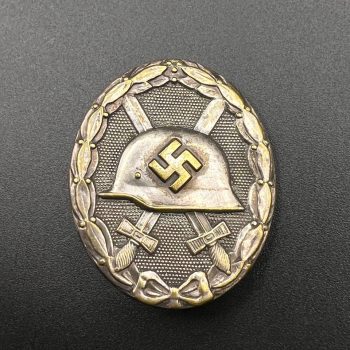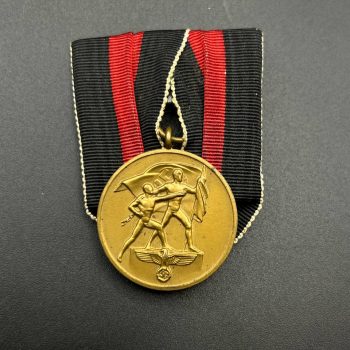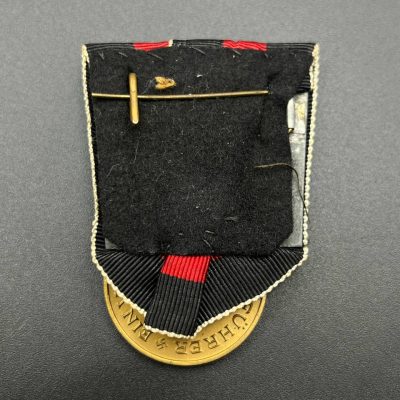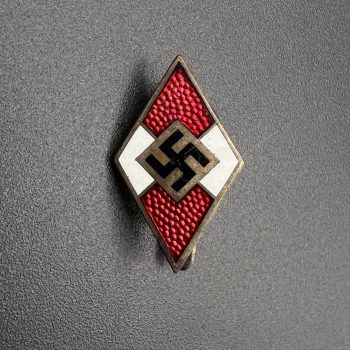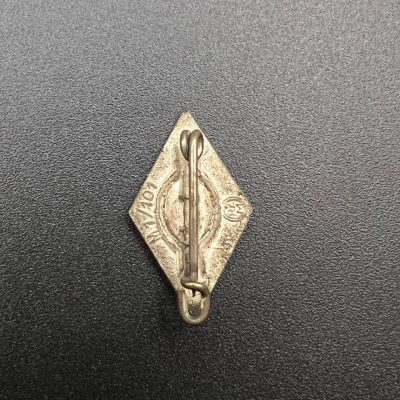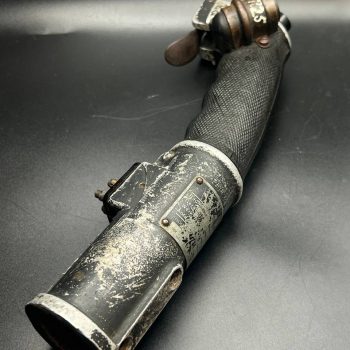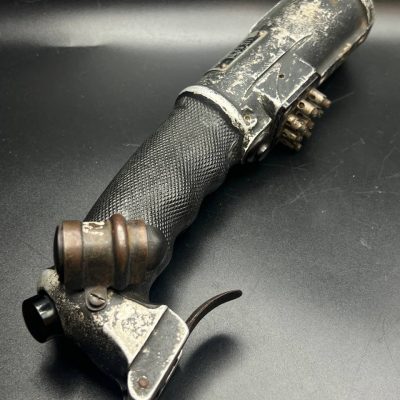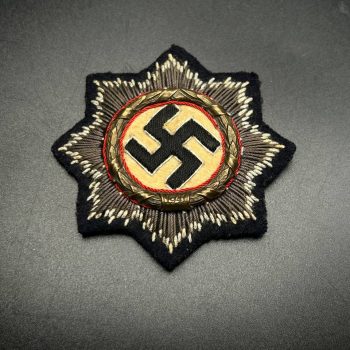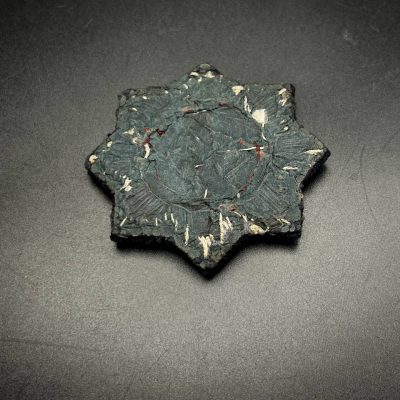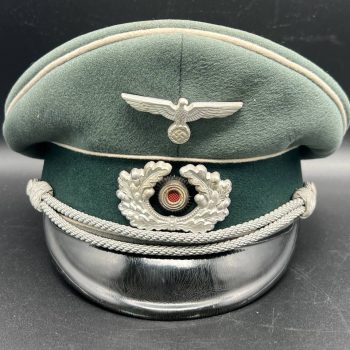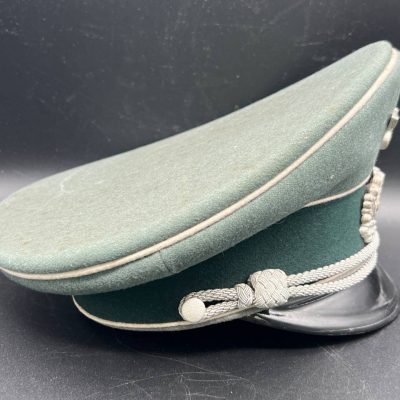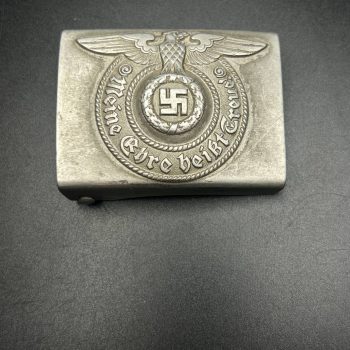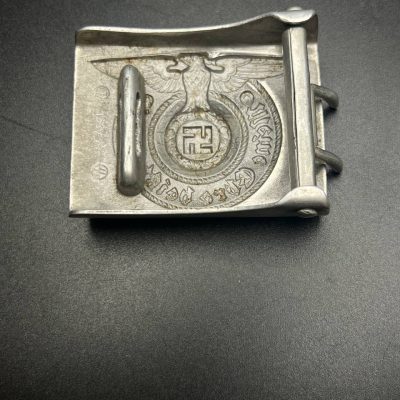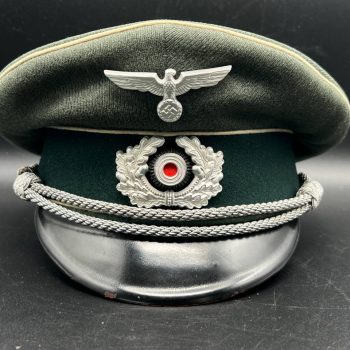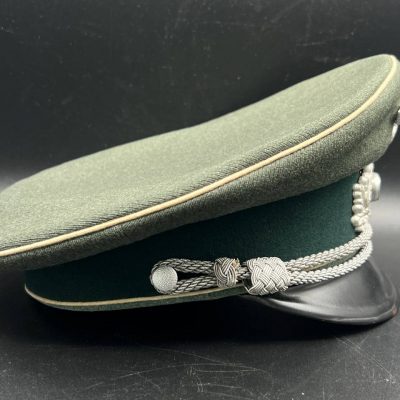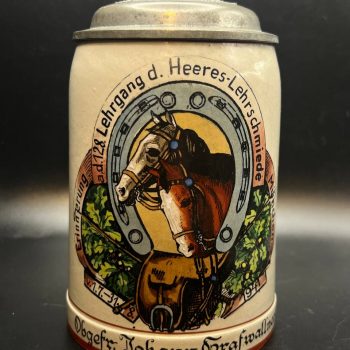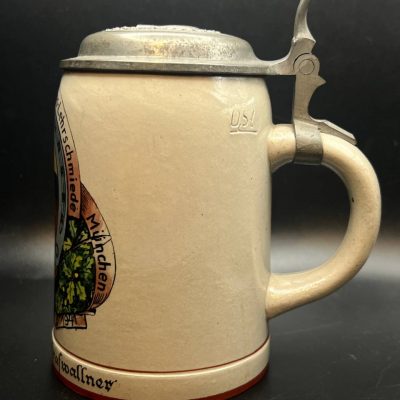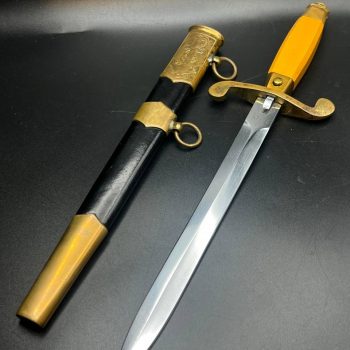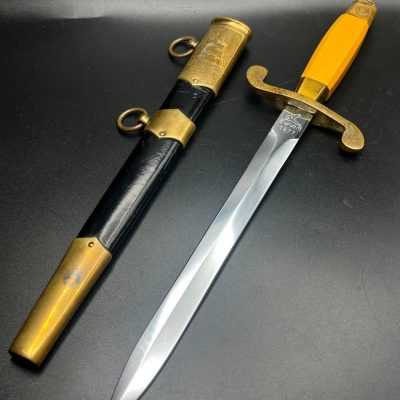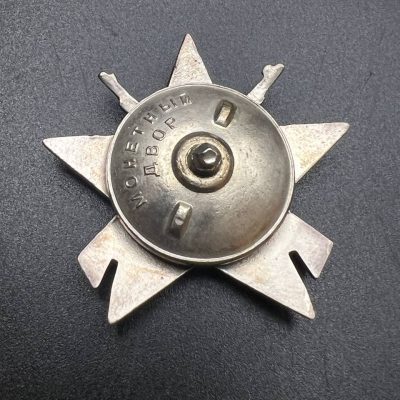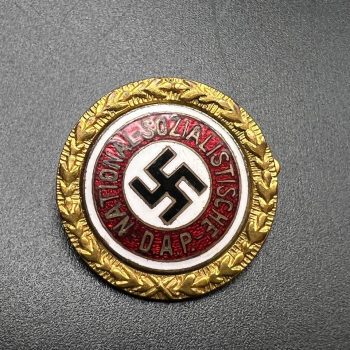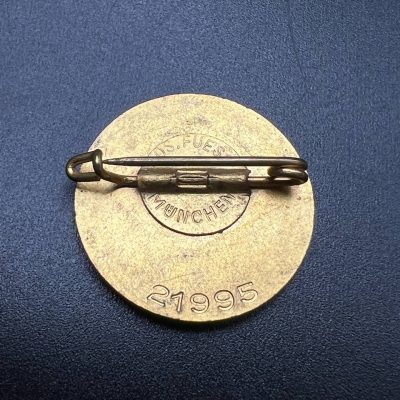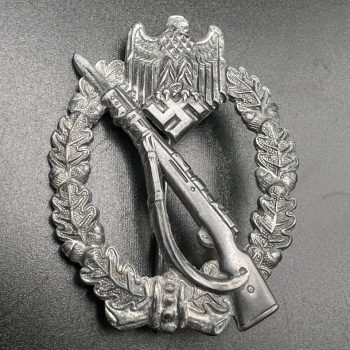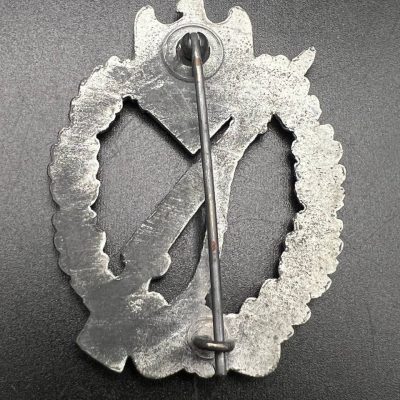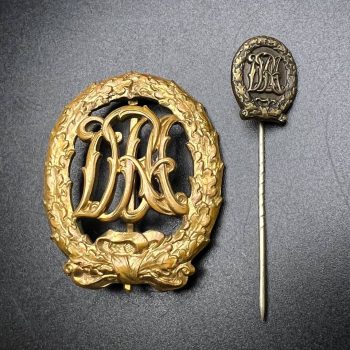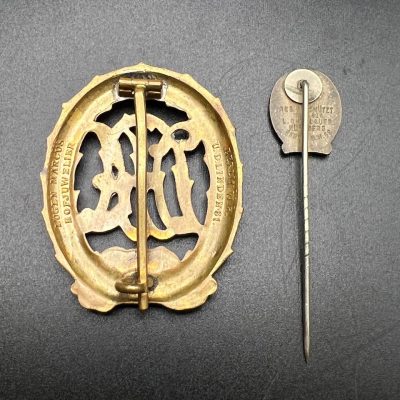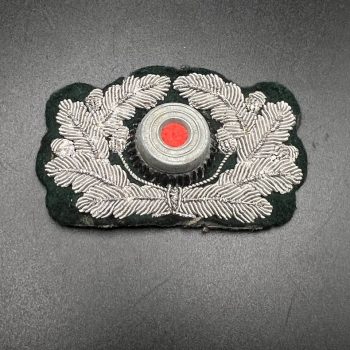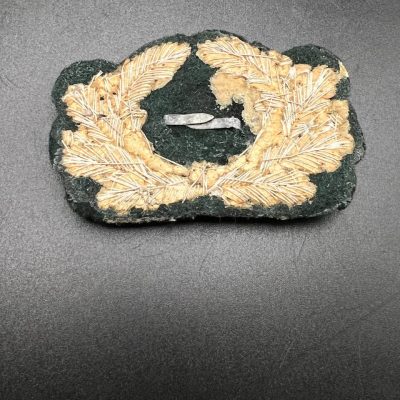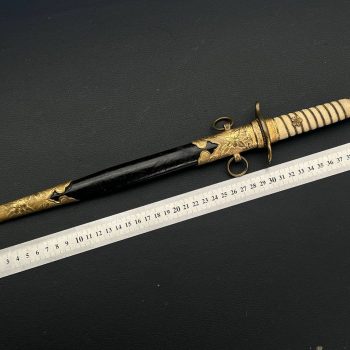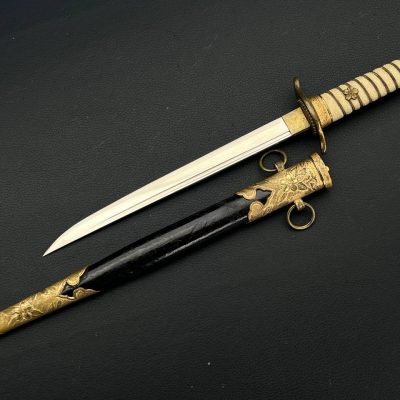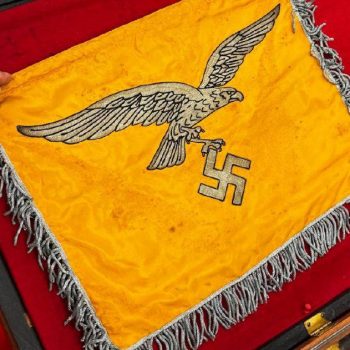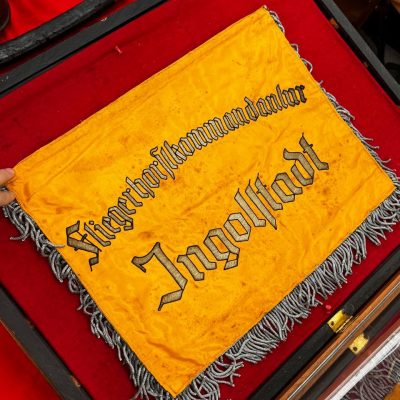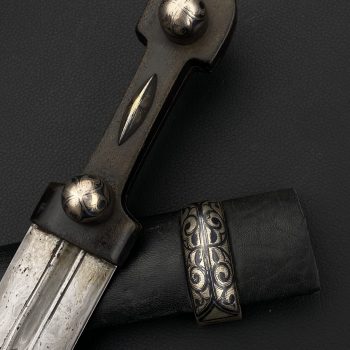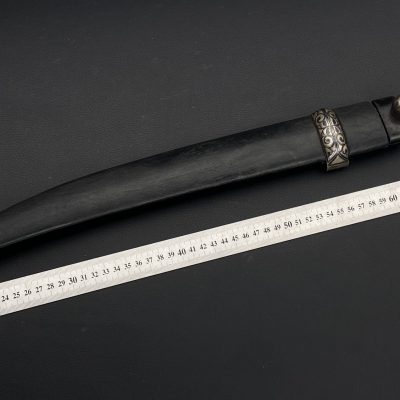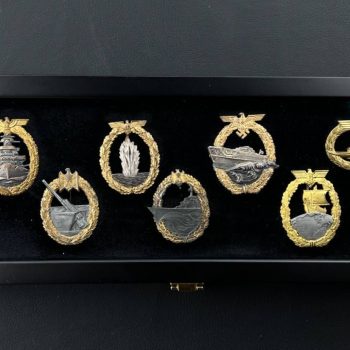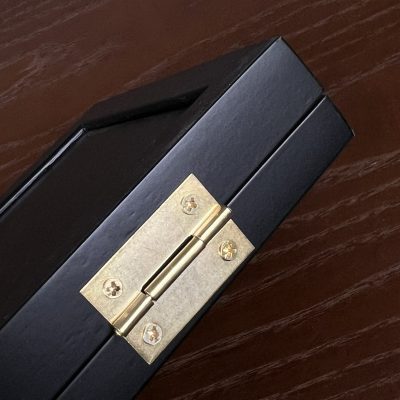Showing 17–32 of 32 results
Filters-
Control Stick Grip of Messerschmitt Bf 109 (Me-109)/Focke Wulf 190(FW-190) (Lot: 622)
Starting bid: $ 5,700Original control stick grip from the Messerschmitt Bf 109 /Focke Wulf FW 190 fighter aircraft of the World War II period. Features a aluminium body with the characteristic ergonomic shape and textured grip surface. Equipped with original buttons and levers for weapon and system controls. Factory data plate with markings and serial details is present and legible. Authentic aviation component, showing strong service wear, combat patina, and remaining in untouched, unrestored condition.
-
German Cross for the Kriegsmarine (Deutsches Kreuz), Cloth Version (Lot: 624)
Starting bid: $ 1,475Original embroidered (cloth) version of the German Cross for the Kriegsmarine, intended for wear on field and service uniforms. Produced as an eight-pointed star with silver-embroidered rays on a black backing. The center shows a cloth swastika on a light field, surrounded by a wreath with red piping. The reverse is cloth-backed and displays typical period wear and stitch traces. An authentic wartime insignia with honest service wear and natural patina, unrestored.
-
SS Belt Buckle, Aluminum, Assmann (RZM M155/39) (Lot: 620)
Starting bid: $ 1,285Aluminum SS belt buckle from the late 1930s period. The obverse features the SS eagle with wreath and the motto “Meine Ehre heißt Treue”. Reverse shows the typical early construction with aluminum hook and roller. Clearly marked RZM M155/39 for Assmann & Söhne, Lüdenscheid. Original wartime example, showing honest age patina and wear, with no repairs or restoration.
-
German Regimental Beer Stein “Lehrgang der Heeres-Lehrschmiede”, 1917–1918, Named (Lot: 619)
Starting bid: $ 630Original German commemorative beer stein from the First World War period. Dedicated to the Lehrgang der Heeres-Lehrschmiede (Army Training Blacksmith Course). The body features multicolor hand-painted decoration with a horse’s head inside a horseshoe, dated 1917–1918. Pewter lid with embossed M16 helmet surrounded by an oak wreath. Named at the base: Gefr. Johann Grafwallner. Good collectible condition, no cracks, complete with original lid.
-
Soviet Navy Dirk, Model 1955 (ZiK, Zlatoust) (Lot: 623)
Starting bid: $ 295Officer’s dirk of the USSR Navy, Model 1955. Polished blade with factory etching and maker’s mark ZiK (Zlatoust Tool Plant), dated 1977. Light-colored grip with brass fittings, pommel decorated with the Soviet state emblem. Classic brass crossguard. Black scabbard with brass mounts and suspension rings. An original complete example, showing honest age wear and natural patina, with no restoration.
-
Small Golden NSDAP Party Badge (Lot: 629)
The price is determingOriginal small Golden Party Badge of the NSDAP, Third Reich period. Circular badge featuring a gilt laurel wreath, red enamel field and black swastika on white enamel center. Reverse marked with serial number 21995, complete with original horizontal pin and catch. Good collectible condition with even patina and no repairs.
-
DRA (Deutscher Reichsausschuss für Leibesübungen) Badge with Miniature (Lot: 628)
The price is determingOriginal German DRA sports badge in gilt bronze, interwar period. Classic oval wreath with DRA monogram to the center. Reverse marked, fitted with original vertical pin. Accompanied by a miniature stickpin. Good collectible condition with even patina and no repairs.
-
Wehrmacht (Heer) Officer Visor Cap Cockade (Lot: 630)
The price is determingOriginal officer’s visor cap cockade of the German Army (Heer). Silver bullion-embroidered laurel wreath mounted on dark green wool backing, with a metal national cockade to the center featuring a red felt insert. Reverse shows typical wear and remnants of original attachment. Third Reich period.
Sold at Blitz price
-
Japanese Naval Officer’s Dagger, Model 1883. (Lot: 62)
Auction EndedAn original Japanese naval officer’s dagger, Model 1883, is offered for sale.
This type of dagger was used by officers of the Imperial Japanese Navy from the late 19th century up to the early stages of World War II.
Specifications:
- Original blade with traditional shape
- Brass guard featuring naval insignia
- Grip wrapped in leather or traditional material (specify if known)
- Metal scabbard with period-correct fittings
- Condition: Good, with natural patina and signs of age
A rare and valuable piece for collectors of edged weapons and Japanese military history.
Product sold for blitz price: $ 1,450 -
German WWll Luftwaffe Trumpet Banner (Lot: 49)
Auction EndedThe front side features the Luftwaffe eagle, while the reverse side bears the inscription:
“Fliegerhorst Kommandantur Ingolstadt” (Airfield Headquarters Ingolstadt).
Fliegerhorst Ingolstadt-Manching Airfield
Construction of the airfield began in 1936 with the creation of taxiways, and from spring 1937 onward, various buildings were erected. In April 1938, the completed airfield was handed over to the military and officially named “Fliegerhorst Ingolstadt”.
During World War II, the base hosted various flight schools, including fighter and night-fighter schools, which operated Messerschmitt Bf 110 aircraft.
The Bf 110 was actively used during the French campaign, in the Battle of Britain (where it proved vulnerable against RAF fighters), and later as a night interceptor defending the Reich.
Its primary equipment included radar systems and heavy armament for engaging enemy bombers.
From mid-1944, the airfield was heavily bombed by Allied forces, with particularly intense raids in April 1945.
On April 26, 1945, the airfield was captured by the United States Army.
Product sold for blitz price: $ 4,250 -
Display case 6×14″ (Lot: 40)
Auction EndedOriginal Warstory display case. Features museum-quality, non-reflective glass with UV protection. Material: alder wood.
Product sold for blitz price: $ 110
